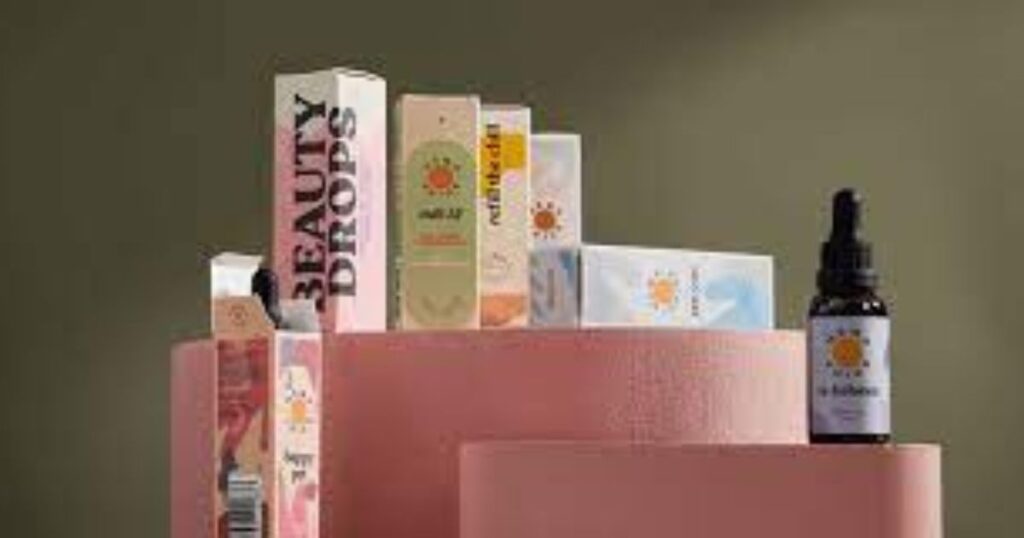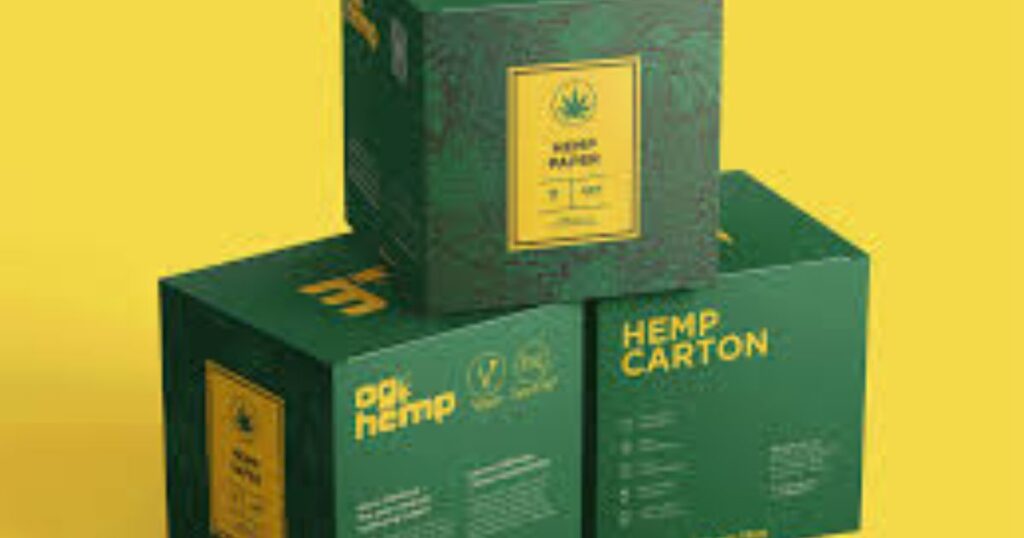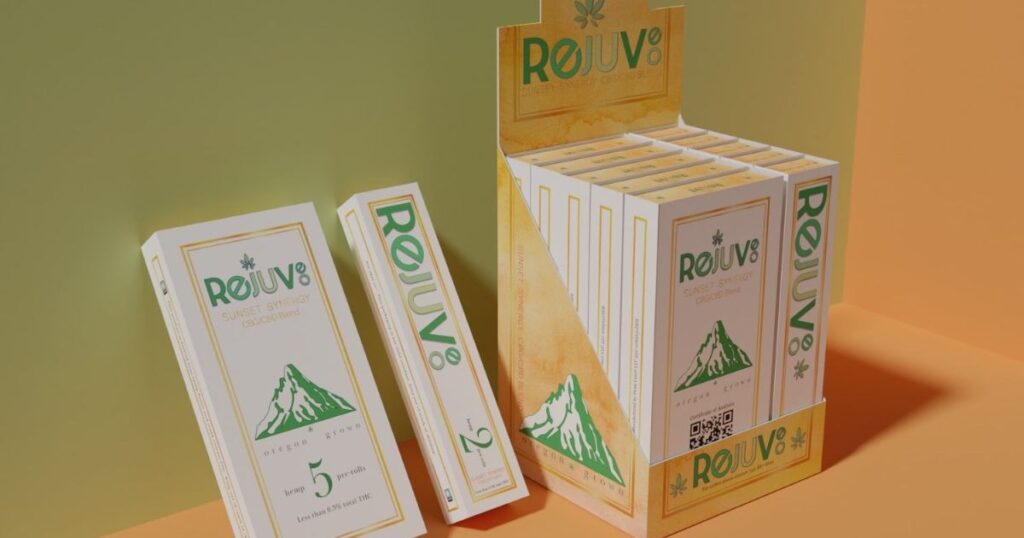In the modern, environmentally conscious world, brands are becoming more conscious of the environmental impact of packaging. Traditional materials, especially single-use plastics, contribute to pollution and resource depletion, pushing companies and consumers to seek greener alternatives. Hemp, an ancient crop with diverse uses, is emerging as a sustainable solution for eco-friendly packaging. Here’s a look at how hemp packaging drives a green revolution for paper prototyping examples brands.
Why Hemp? The Environmental Impact of Traditional Packaging
The environmental drawbacks of traditional packaging are numerous. Plastic, the go-to material for many brands, is derived from fossil fuels, consumes vast amounts of energy, and takes hundreds of years to decompose. Paper and cardboard, while biodegradable, are often sourced from deforestation practices and require heavy water and chemical use in paper prototype template production.
Hemp packaging, on the hemp plastic packaging other prototyping on paper app hand, offers a sustainable and renewable alternative. As a plant that grows quickly and with minimal water, hemp regenerates soil, sequesters carbon, and requires fewer pesticides than most crops. As a bonus, nearly hemp packaging bags every part of the hemp plant is usable, making it an efficient and sustainable raw hemp packaging boxes A Comprehensive Guide To Finding The Best Paper Mailer material.
Define Sustainable Packaging and its Relevance to the Environment
Sustainable packaging refers to materials and designs created with a reduced environmental footprint. In order to reduce waste and resource consumption, this kind of packaging emphasizes the use of recyclable, biodegradable, or renewable materials. Reducing carbon emissions, minimizing dependency on non-renewable resources, and avoiding pollution are the goals of sustainable packaging. By incorporating eco-friendly processes, such as reducing packaging size and opting for minimalistic designs, hemp packaging companies sustainable packaging also helps decrease waste and energy use.
Its relevance to the environment is substantial, as traditional packaging, often plastic-based, contributes significantly to pollution and landfill accumulation. Sustainable alternatives, such as compostable materials or recycled cardboard, can break down naturally or be reused, reducing ecosystem harm. In order to promote a healthier planet, sustainable packaging is crucial as businesses and consumers grow more ecologically conscious. It allows industries to meet modern demands while protecting natural resources and reducing paper prototype for mobile application pollution.
Brief Overview of Hemp as a Renewable and Eco-friendly Resource
Hemp is a highly renewable and eco-friendly resource valued for its rapid growth cycle and diverse applications. This versatile plant matures in as little as four months, producing significantly more biomass per acre than traditional crops. Hemp enriches soil health; its deep roots stabilize the ground, prevent erosion, and promote nutrient cycling, enhancing future crop yields. As a low-maintenance crop, it requires minimal water and few pesticides, making it a more sustainable choice in agriculture.
Hemp can be used across various industries, including textiles, paper, biofuel, and biodegradable plastics, reducing reliance on fossil fuels and deforestation. It’s also a natural carbon sink, absorbing more CO2 per acre than most plants, which helps mitigate greenhouse gas emissions. Its adaptability and eco-friendly benefits make hemp an ideal crop for sustainable farming and a valuable asset in transitioning to a greener economy.
The Advantages of Hemp Packaging for Brands

Hemp packaging is an eco-friendly solution for brands seeking sustainability without compromising quality. Derived from fast-growing, renewable hemp plants, this packaging is biodegradable and significantly reduces environmental impact compared to traditional plastics. Hemp fibers are durable and versatile, making them ideal for various packaging needs, from bottles to bags. Not only does hemp packaging support brands’ green initiatives, but it also aligns with increasing consumer demand for environmentally responsible products.
This packaging option also helps reduce a brand’s carbon footprint, as hemp absorbs CO₂ from the atmosphere during its growth, contributing to cleaner air. Additionally, hemp requires less water and pesticides than other crops, translating to a more sustainable and ethical production process. By choosing hemp packaging, brands can strengthen their reputation, appeal to eco-conscious consumers, and positively impact the planet—all while maintaining high-quality, effective packaging solutions.
Sustainability and Biodegradability
Hemp is biodegradable, breaking down naturally in the environment and leaving no toxic residue. This aligns with circular economy principles, reducing brands’ waste The Environmental Benefits of Paper Grocery Bags footprint.
Unlike trees, which take decades to mature, hemp grows in as little as four months. This rapid growth cycle allows for sustainable sourcing without the ecological drawbacks of deforestation or fossil fuel extraction.
Strength and Durability
Hemp fibers are among the strongest plant fibers in the world, creating durable packaging that withstands transportation and handling. This resilience allows brands to adopt hemp-based packaging without sacrificing product protection.
From bags and boxes to labels and even edible wrappers, hemp is incredibly versatile. It is ideal for various kinds of product packaging because it can be processed into paper, plastics, and textiles.
Eco-Friendly Brand Image
With more consumers seeking sustainable options, brands using hemp packaging can position themselves as leaders in environmental responsibility. This transparency not only builds customer loyalty but also drives sales.
Types of Hemp-Based Packaging Products
Hemp-based packaging offers sustainable, eco-friendly alternatives to traditional materials, with options for various industries. Biodegradable and renewable, hemp packaging is popular for its durability and minimal environmental impact. Key products include
which is recyclable and ideal for lightweight packaging and labeling, and a durable, compostable alternative for containers and bags. Additionally, “offer sturdier, reusable packaging for cosmetics, supplements, and food products. These products reduce reliance on petrochemical plastics, minimize waste, and align with eco-conscious branding. The natural fibers in hemp packaging provide strong, moisture-resistant, and odor-neutral solutions, making it a top choice for brands prioritizing sustainability. Hemp’s rapid growth cycle also makes it highly renewable, requiring fewer resources than other materials, making it a responsible choice for environmentally friendly hemp packaging manufacturers packaging.
Examples of Hemp Packaging in Action
hemp packaging, aiming to reduce environmental impact while mai<yoastmark class=”>ntaining functional and visually appealing packaging solutions. One standout example is CBD product packaging, where companies often use biodegradable hemp fibers for boxes and labels, creating a sturdy, sustainable exterior with a natural aesthetic that resonates with green-minded consumers. Another example is seen in the cannabis industry, where hemp-based bags and containers keep products fresh and protected while aligning with eco-friendly values.
Even cosmetic brands are adopting hemp-based tubes and jars, showcasing how versatile and durable hemp packaging can be across various sectors. These packaging solutions reduce plastic waste and showcase the brand’s commitment to sustainability, as hemp is highly renewable and decomposes faster than conventional plastics. Overall, hemp packaging blends form and function beautifully, supporting the planet and the brand’s message of environmental hemp packaging .
Challenges in Hemp Packaging Production
Hemp packaging production faces several challenges, from material sourcing to regulatory compliance. First, securing high-quality hemp fiber can be difficult due to inconsistent supply chains driven by crop variability and regional farming practices. Additionally, processing hemp into packaging materials demands specialized equipment and techniques, which can raise production costs. Another hurdle is achieving durable, eco-friendly, and appealing packaging that meets consumer expectations while remaining biodegradable and hemp packaging material compostable.
<span data-preserver-spaces=”true”>Regulatory requirements add complexity; packaging must comply with environmental standards and often stringent cannabis industry guidelines. Furthermore, because hemp packaging is relatively new, product design, printing, and branding innovation can be limited, making it hard for brands to create distinctive, recognizable packaging. Educating consumers about the sustainability benefits of hemp-based packaging versus traditional plastics is also crucial but challenging, impacting adoption rates. Overcoming these barriers requires investment in research, sustainable practices, and industry collaboration for viable, eco-friendly packaging solutions.
- Cost of Production: Due to limited infrastructure and supply chains, hemp can be more expensive to process than conventional materials.
- Supply Limitations: With regulatory restrictions still present in some regions, not all countries have robust hemp production facilities.
- Misunderstandings about hemp’s association with marijuana can sometimes deter companies or consumers from considering it.
The Future of Hemp Packaging: Driving the Green Revolution

As innovation and demand grow, the cost of hemp-based materials is expected to decrease, making it more accessible for brands across industries. Companies investing in hemp packaging now are likely to reap long-term benefits as consumer preferences increasingly favor sustainable solutions.
In addition, technological advancements are leading to new forms of hemp packaging. Scientists are exploring ways to enhance hemp’s properties, making it even more resistant to moisture, heat, and other environmental factors.
Final Thoughts
As we conclude, it’s clear that this product offers a uniquely refined experience that stands out in both quality and impact. Combining carefully selected ingredients and thoughtful craftsmanship results in a product that satisfies casual users and enthusiasts. Its design, balanced flavor profile, and smooth finish appeal to various preferences. Users can expect an experience that is not only enjoyable but also consistent with each use, delivering the same satisfaction time and again.
Examples of Brands Using Hemp Packaging
Many forward-thinking brands are turning to hemp packaging as an eco-friendly alternative to traditional materials. For example, Dr. Bronner’s, a renowned natural soap brand, utilizes hemp-based packaging to reinforce its commitment to sustainability. This choice aligns with the brand’s values, offering a biodegradable, sturdy option that reduces plastic waste. Another case, HempBox, uses hemp-based packaging to ship organic skincare products.
This packaging highlights the brand’s eco-conscious mission and appeals to environmentally aware consumers. In the cannabis industry, Sana Packaging stands out by producing containers from hemp-based bioplastic, addressing waste issues specific to cannabis packaging. Food and beverage brands, like Manitoba Harvest, also adopt hemp packaging for its compostability and minimal environmental impact, aligning with their health-conscious image. These examples show how hemp packaging enhances brand authenticity and supports sustainable goals, resonating with consumers who value environmentally responsible practices.</p>
Future Trends and Innovations in Hemp Packaging

The future of it is poised for significant innovation, driven by sustainability and eco-conscious consumer demand. As awareness of environmental issues grows, hemp emerges as a leading alternative to conventional plastics. Its biodegradability and renewability make it attractive for brands seeking to reduce their carbon footprint. Innovations in hemp processing are unlocking new possibilities, such as stronger, lightweight materials that can be applied to various products, including cosmetics and food packaging. Technological advancements, like hemp-based bioplastics, are making production more efficient and cost-effective.
Brands also explore hemp’s versatility in creating aesthetically pleasing designs that appeal to eco-friendly consumers. As regulations around sustainability tighten, companies investing in hemp packaging will enhance their market appeal and contribute to a circular economy, ensuring a greener future for packaging solutions.
Conclusion:
In conclusion, hemp packaging represents a sustainable alternative to traditional materials, significantly reducing environmental impact while offering strength and versatility. By utilizing hemp, businesses can align with eco-friendly practices, addressing consumer demand for sustainable options. Hemp’s biodegradability and renewable nature help mitigate pollution and resource depletion, promoting a circular economy.
As more companies adopt it, the industry can expect innovations and improvements that enhance its functionality and appeal. Ultimately, embracing it contributes to a healthier planet and reflects a commitment to sustainable practices, setting a positive example for future generations.
FAQ:
What is Hemp Packaging?
Hemp packaging refers to materials made from hemp fibers, a renewable resource derived from the hemp plant. These materials can be used for various products, including boxes, bags, and biodegradable wraps.
Why Should I Choose It over Traditional Packaging?
Hemp packaging is eco-friendly, biodegradable, and sustainable. Unlike plastic, it breaks down naturally and reduces environmental impact. Furthermore, hemp is a more sustainable option because it uses less water and pesticides than other crops.
Is Hemp Packaging Durable?
Indeed, hemp packing has a reputation for being robust and long-lasting. Among the strongest natural fibers on the market, hemp fibers are lightweight and offer superior product protection.
Can Hemp Packaging be Customized?
Absolutely! it can be customized in size, shape, and printing. Many companies offer tailored solutions to meet specific branding and product needs.</span>
Is it Suitable for Food Products?
Yes, it can be used for food products. However, ensuring that the packaging complies with food safety regulations in your region is essential.</p>
How does Hemp Packaging Compare to Recycled Paper Packaging?
While hemp and recycled paper packaging are more sustainable than conventional options, it is generally more durable and requires less water and energy. Additionally, hemp can be harvested multiple times yearly, providing a more consistent supply.

